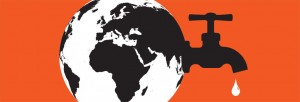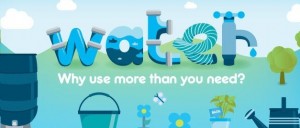 Subject: Design and Technologies
Subject: Design and Technologies
Year level: Grade 3+
Strand: Knowledge and Understanding, Process and Production Skills
Substrand: Food and Fibre Production
Content Descriptor Example: Types of food and fibre produced in different environments, cultures or time periods, including the equipment used to produce or prepare them (ACTDEK012). Past performance, and current and future needs are considered when designing sustainable food and fibre systems for products (ACTDEK021).
Cross-Curriculum Priorities:
- Sustainability
General Capabilities
- Literacy
- Critical and Creative Thinking
- Personal and Social Capability
- Ethical Understanding
Links to other learning areas
- Health and Physical Education
- Science
- English
- Mathematics
- Art
Click the picture above to open the ‘creating a food garden’ resource
Link to Junior Landcare website: https://landcareaustralia.org.au/junior-landcare/
First Impressions
The Junior Landcare website provides teachers, students and parents with information about how to improve and look after the current and future environment. It is easy to read and navigate through the website. There are a heap of resources and links providing you with more ideas and inspiration. This resource is perfect for integrating Sustainability into the classroom and developing students ethical understanding. Landcare Australia also have a Youtube channel where there are a number of videos about Australia and the environment we live in. Perfect to guide student discussion developing knowledge and understanding.
What is Junior Landcare?
Junior Landcare was created by Landcare Australia in 1998. This was created to encourage young people to play an active role in conserving current land to ensure a safe future environment. Junior Landcare encourages young people to be accountable for their actions and take responsibility of their future environment. Junior Landcare provide a range of days where students can volunteer and assist in creating a better future. The best thing about Junior Landcare, is that it links straight in with the curriculum. So you know that the students will benefit academically from the experience. The L.I.F.E website also provides event days where students can volunteer or you could create your own event to get people together. Discover more in the video below.
How you could use Junior Landcare in the Classroom
There are multiple resources on Junior Landcare that would be useful in the classroom. An activity that would provide multiple linked activities as well as benefit the actual school is to create a food garden. Creating a food garden involves multiple steps that can incorporate many other learning areas. Students would begin with investigating and defining when discussing potential ideas to create a food garden. Write all of their ideas down and discuss why some things might work better than others. Involve Mathematics by designing a to scale 2D drawing of a food garden including labels and technical terms. Now its time to produce and implement the design to create the food garden with the safe use of tools and equipment. Incorporate Science where students evaluate the growth of the food garden and ask questions like, ‘what could be done to improve the growth’. This will provide students with a collaborative and hands on experience. After the garden is created you can involve Art by drawing a birds eye view of the garden or involve English by writing a procedural text on how to create a food garden. There are so many possibilities with creating a food garden.
TIPS
Gather extra helping hands! Engage with parents and the school ground keeper to see if they can help create the masterpiece.
Create a rotating roster for students to water and look after the garden. Otherwise you will spend half the afternoon everyday doing it yourself.
Something extra…
Download and have a read of the Teacher’s Resource Guide.
Check out this classroom blog where they have created their own food garden for inspiration and ideas.
Also have a look at Landcare Australia’s Youtube channel.
Other Resources from Junior Landcare
Enhancing and Restoring Habitats
Growing Healthy Plants using Natural Pesticides
By Jessica Read
References
Junior Landcare. [2015]. Retrieved from https://landcareaustralia.org.au/junior-landcare/
Landcare Australia. (2015, March 26). Junior landcare hits our tv screens [Video file]. Retrieved from https://www.youtube.com/watch?v=sEwFAwmdAoQ
Landcare Australia. (2014, December 3). Landcare is for everyone [Video file]. Retrieved from https://www.youtube.com/watch?v=NoVv_RMrDzk&t=34s
Landcare Australia. (2016, November 28). Love our Aussie land [Video file]. Retrieved from https://www.youtube.com/watch?v=v6sGGdIQ2SU&t=1s
School Curriculum and Standards Authority. [2014]. Design and Technologies. WA: Government of Western Australia. Retrieved from http://k10outline.scsa.wa.edu.au/home/p-10-curriculum/curriculum-browser/technologies/design-and-technologies2



